|
Date
|
Speaker
|
Topic
|
Faculty Host
|
11/17/2017
365A MH
10:30-12:00
|
Nanda Kumar
UT Dallas
|
Unintended Consequences of Promotions: Managing Prices and Profits When Loyal Consumers Stockpile
-
Click to read Abstract
Increased sales due to promotions could be at the expense of competitors: such sales come from consumers with relatively weak brand preferences. However, increased sales from brand loyal consumers could well cannibalize sales of the promoted brand. An unintended consequence of promotions is that loyal consumers who otherwise would be willing to pay high prices may strategically stockpile at low prices to reduce their cost. What is its impact on firms'' profits? How should firms adapt
their pricing to consumer stockpiling? To answer these questions we analyze an infinite horizon dynamic model of competition under duopoly and derive the Markov Perfect
Equilibrium pricing strategies.
We find that strategic stockpiling by loyal consumers at low prices does not reduce firms'' long-run profits if initial consumer inventory is zero. We analytically derive an upper bound on the losses that occur following consumer stockpiling and show that it is relatively small. We derive the mixed strategy equilibrium that serves as a guide for managers on how to adapt their pricing strategies to meet the challenge of
stockpiling by loyal consumers. When the equilibrium pricing is compared to the situation with no stockpiling, we find that firms move away from frequently promoting below the stockpiling threshold, moreover the probability of charging the reservation
price and the price below which consumers start stockpiling increases. Specifically, mass points appear at reservation price and in the interior of the support at stockpiling
threshold. Finally, a prediction of our model is a positive inter-temporal correlation in prices implying, somewhat counter-intuitively, that in equilibrium deep promotions are
followed by deep promotions.
|
Seshadri Tirunillai
|
11/10/2017
365A MH
10:30-12:00
|
Gita V. Johar
Columbia
|
The Seesaw Self: Possessions, Identity (De)activation, and Task Performance
-
Click to read Abstract
Research has shown that possessions have the power to change consumers’ self-construal and activate different aspects of the self. Building on this literature, we suggest that the salience of product ownership not only activates the product-related self, but also simultaneously deactivates product-unrelated selves, resulting in impaired performance on tasks unrelated to the activated self. In six experiments, we first elicit feelings of ownership over a product (e.g. a calculator) to activate a product-related identity (e.g., the math-self). Participants then engage in a task that is labeled as being a product-related task (e.g., math task) or a product-unrelated task (e.g., visual task). Despite the task being the same, participants in the ownership condition perform worse on a product-unrelated task than those in the baseline no-ownership condition. Indirect identity accessibility measures provide support for the link between ownership salience and identity activation and deactivation. Support for the underlying activation process also comes from the finding that performance impairment is more likely to hold under conditions of low self-concept clarity, where self-identity is malleable.
|
Melanie Rudd
|
11/3/2017
365A MH
10:30-12:00
|
Blake McShane
Kellogg
|
Multilevel Multivariate Meta-Analysis with Application to Choice Overload
|
Sam Hui
|
10/20/2017
365A MH
10:30-12:00
|
Kanishka Misra
UC San Diego
|
Dynamic Online Pricing with Incomplete Information Using Multi-Armed Bandit Experiments
-
Click to read Abstract
Consider the pricing decision for a manager at a large online retailer, that sells millions of products. A manager must decide on real-time prices for each of these products. It is infeasible to have complete knowledge of demand curve for each product. A manager can run price experiments to learn about
demand and maximize long run profits. There are two aspects that make this setting different from traditional brick-and-mortar settings. First, due to the number of products the manager must be able to automate pricing. Second, an online retailer can make frequent price changes. In this paper, we
propose a dynamic price experimentation policy where the firm has incomplete demand information. For this general setting, we derive a pricing algorithm that balances earning profit immediately and learning for future profits. The proposed approach combines multi-armed bandit (MAB) algorithms
statistical machine learning with partial identification of consumer demand from economic theory. Our automated policy solves this problem using a scalable distribution-free algorithm. We show that our method converges to the optimal price faster than standard machine learning MAB solutions to the problem. In a series of Monte Carlo simulations, we show that the proposed approach perform favorably compared to methods in computer science and revenue management.
|
Seshadri Tirunillai
|
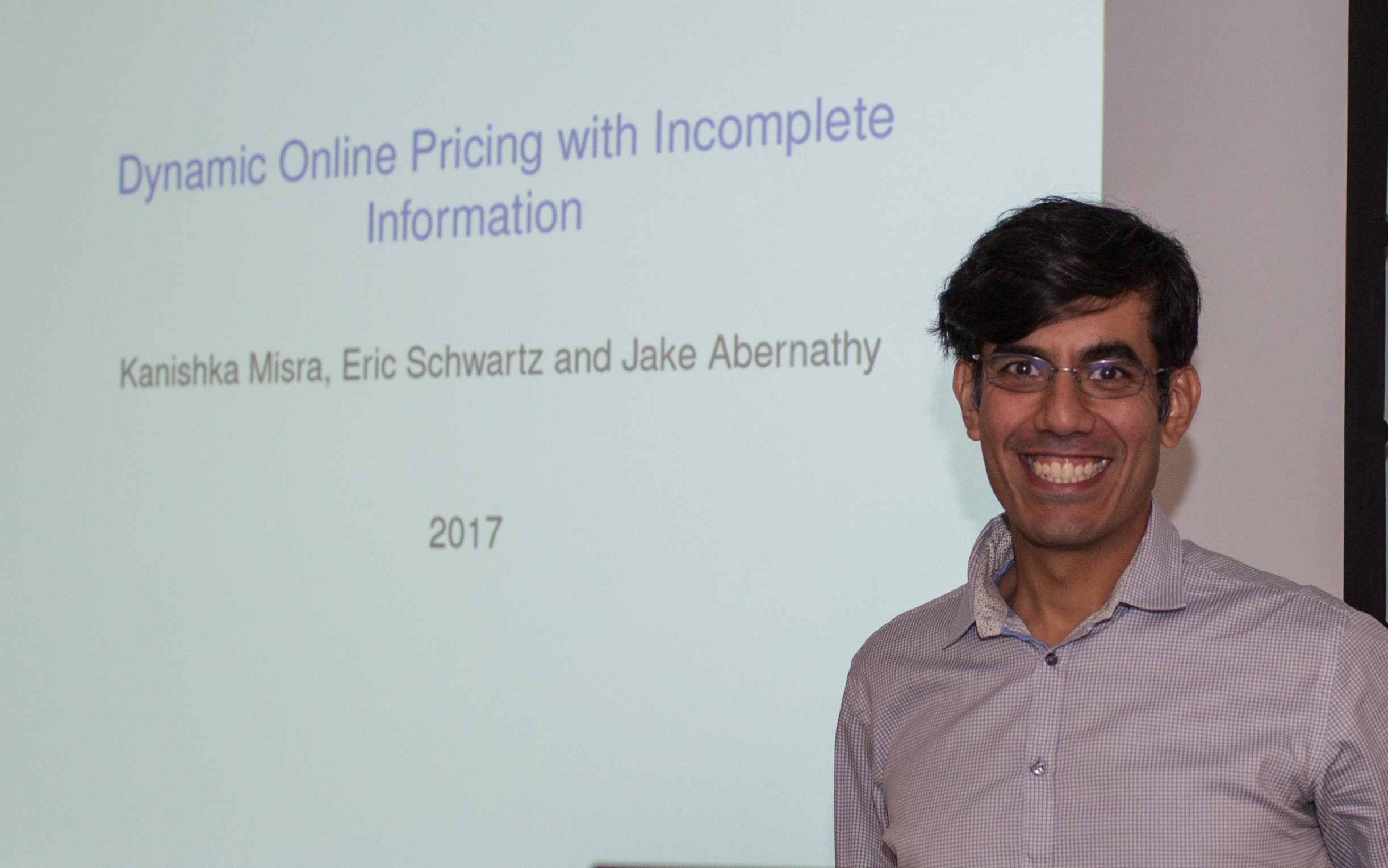
|
10/13/2017
365A MH
10:30-12:00
|
Angela Lee
Kellogg
|
Goal Focus vs. Temptation Suppression: What Underlies Successful Self-Control?
-
Click to read Abstract
People facing a self-control dilemma can follow one of three self-control strategies: focus on the goal, counter the temptation, or do both simultaneously. The present research examines the efficacy of these strategies and investigates how people’s regulatory orientation may influence their choice of self-control strategies. Five studies show that (1) focusing on the goal is more effective than countering temptation or the dual strategy of goal focus and temptation countering (2) vigilant goal-focus efforts account for the successful self-control of prevention-oriented individuals and (3) eagerness efforts that underlie the dual self-control strategy ironically weakens the self-control of promotion-oriented individuals.
|
Melanie Rudd
|
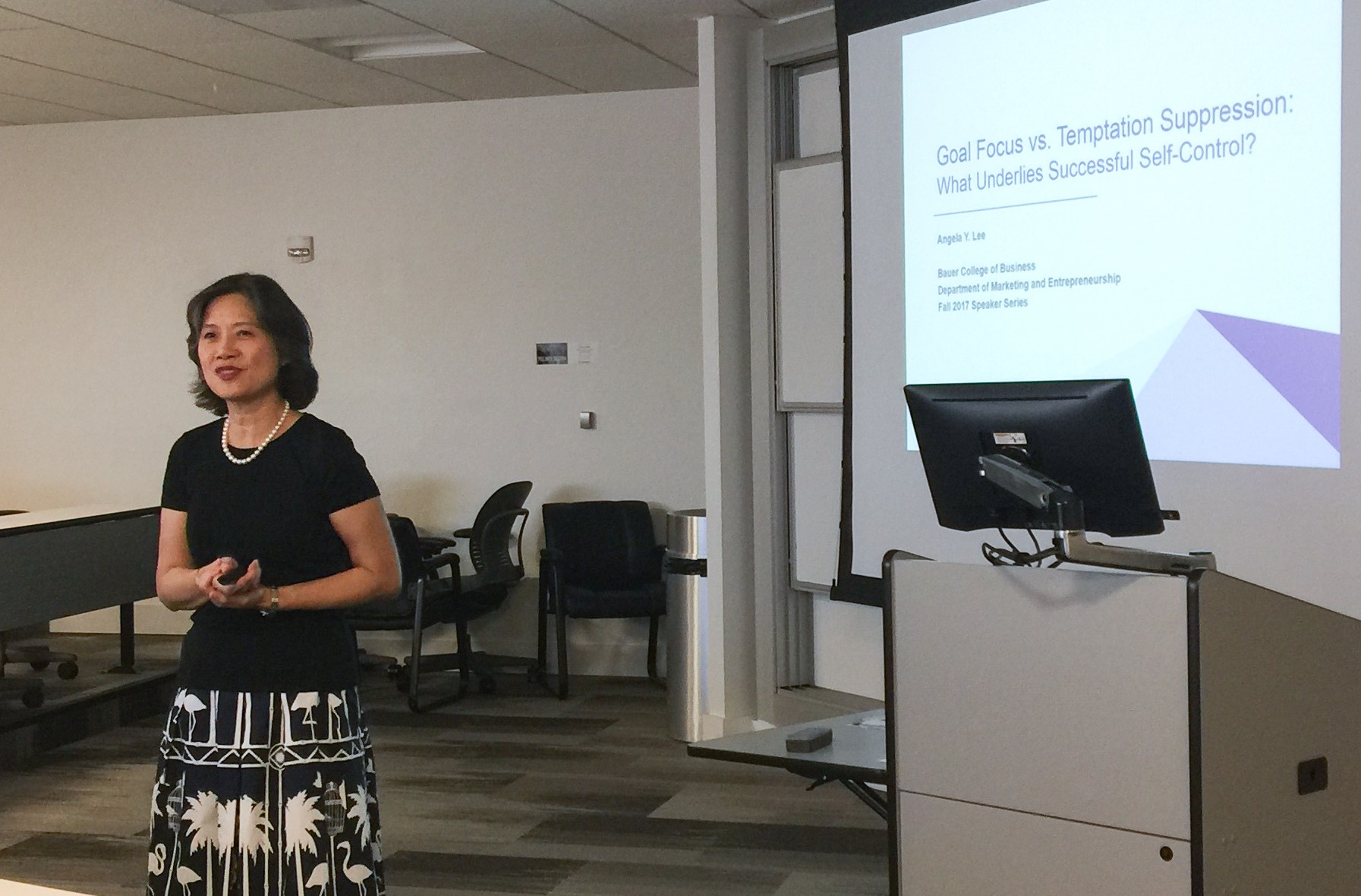
|
10/9/2017
365A MH
10:30-12:00
|
Garrett Johnson
Northwestern
|
The Online Display Ad Effectiveness Funnel & Carry-Over: A Meta-study of Predicted Ghost Ad Experiments
|
Seshadri Tirunillai
|
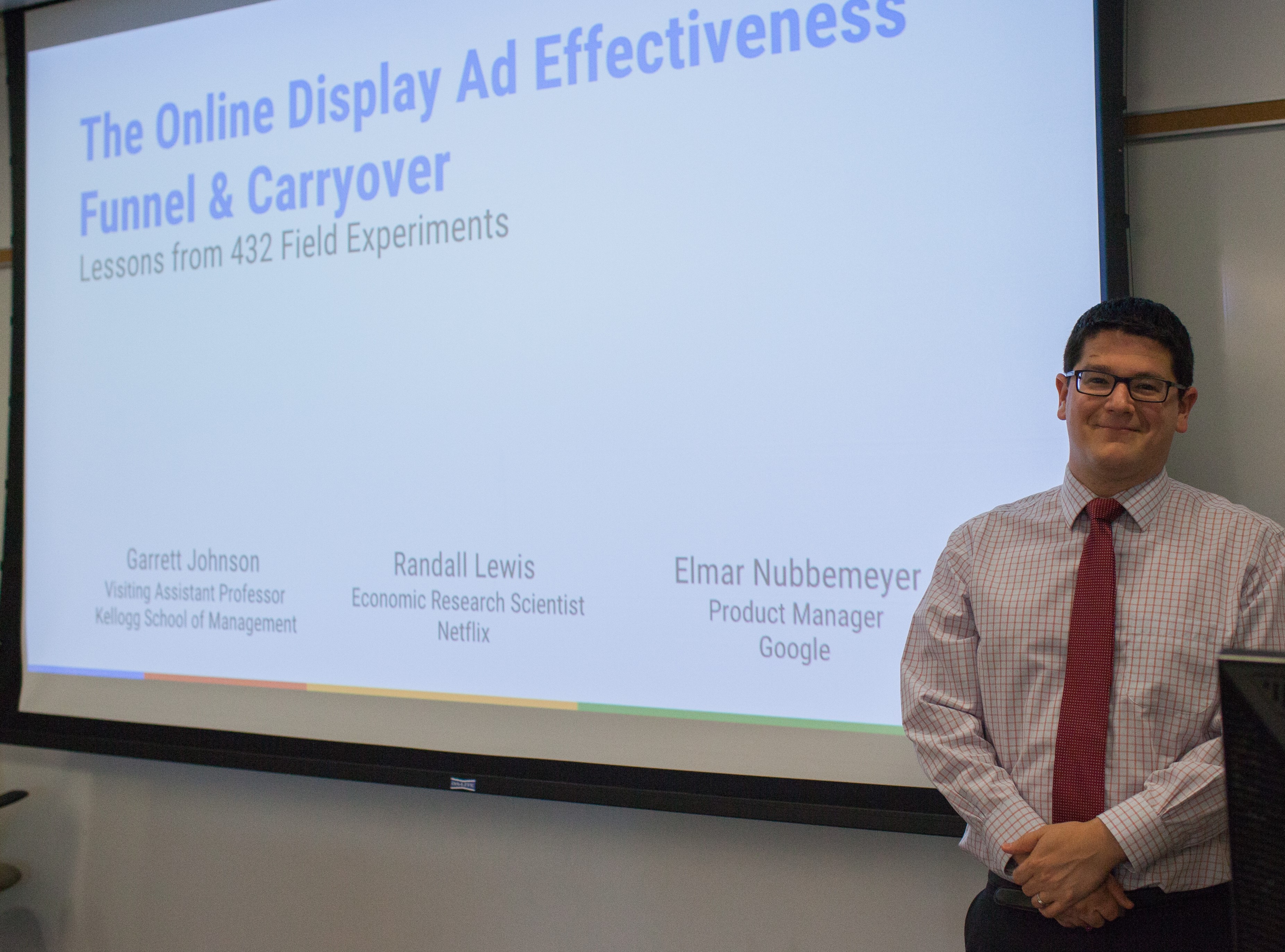
|
10/2/2017
365A MH
10:30-12:00
|
Abhinav Uppal
Wharton
|
A Theory of Selling Formats in Retailing: Direct versus Mediated Access
-
Click to read Abstract
Retailers worldwide employ various selling formats characterized by different degrees to which customers can access and inspect products in the store. In the ``direct access'''''''' format, all available products are stocked on shelves directly accessible to customers for inspection, while store associates offer minimal assistance. In the ``mediated access'''''''' format, retail stores are manned by shopkeepers who offer one product at a time to customers and the customers decide whether to purchase an offered product or to ask for an alternative.
We build a theoretical model in which a retailer makes selling format, product assortment and pricing decisions, and consumers have shopping costs. There are two products: a general purpose brand that provides the same utility uniformly to all consumers, and a specialized brand that gives ex ante uncertain utility to a consumer that can be higher or lower than the utility of the general purpose brand, and a consumer can resolve this by inspecting this brand.
We find that the retailer chooses the mediated access selling format with the specialized brand offered first when customers'''' uncertainty about fit with the specialized brand is large (as long as the retailer''''s margin on the general purpose brand is not too high). If consumers'''' uncertainty about fit with the specialized brand is medium, the retailer chooses to internalize consumer shopping costs by employing the direct access format and carries both brands. If consumers'''' uncertainty about fit with the specialized brand is small, the retailer chooses the mediated access format carrying only the general purpose brand.
Our model offers an explanation for the observation that the mediated access selling format is more popular in emerging markets (as compared to developed markets) where consumers'''' shopping costs (e.g., cost of time) are typically small, but in these markets this format is less popular for large, organized retailers (as compared to small, unorganized retailers) that may be able to obtain better trading terms, e.g., larger retail margins, from upstream sellers.
|
Seshadri Tirunillai
|
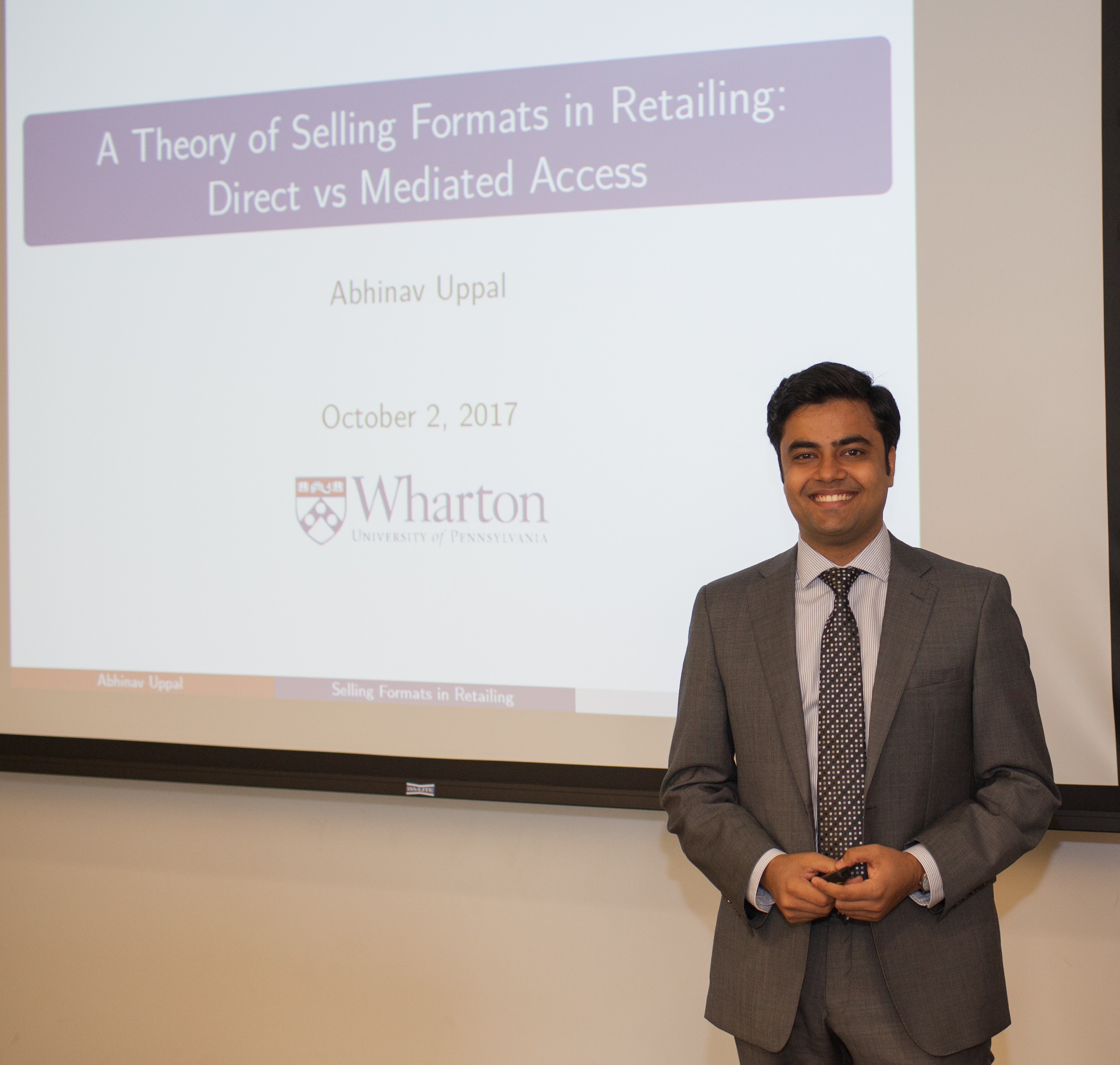
|
9/29/2017
365A MH
10:30-12:00
|
David Schweidel
Georgetown
|
How Content Affects Clicks: A Dynamic Model of Online Content Consumption
-
Click to read Abstract
With many consumers being exposed to news via social media platforms, news organizations are challenged to attract visitors and generate revenue during visits to their websites. For advertising-supported websites, website traffic is related directly to revenue. Using clickstream data from a major news organization, the authors develop a user-level dynamic model of clickstream behavior that takes into account the content of both headlines and stories that visitors read. The authors assume that article headlines inform readers’ expectations of the article content and that prior consumption of articles during a visit to the website will affect preferences for subsequent consumption. The authors find that readers appear to exhibit state dependence in the tone of the articles that they read. They also show how the topics expressed in headlines can affect the amount of content readers consume when visiting the news organization to a much larger degree compared to the topics expressed in the content of the article. Online publishers can make use of such findings to present visitors with content that is likely to maintain and/or increase their engagement and consequently drive advertising revenue.
|
Sam Hui
|
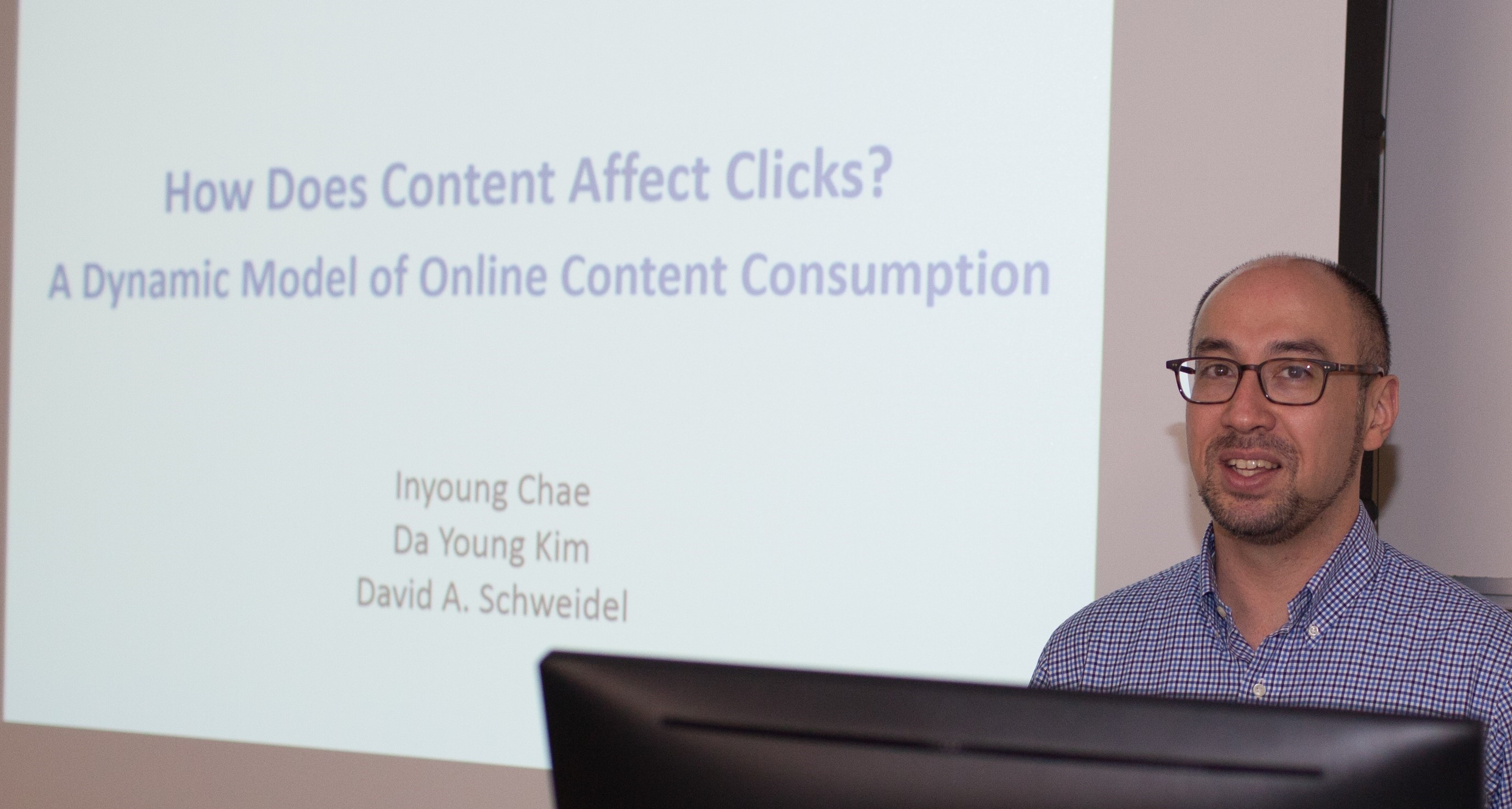
|
9/25/2017
CBB 524
10:30-12:00
|
Shijie Lu
UNC
|
Dynamic Effect of Digital Badging on User-generated Content Platforms
-
Click to read Abstract
User-generated content (UGC) platforms have increasingly utilized digital badging as a key mechanism to incentivize user engagement. This research empirically examines the dynamic effect of digital badging on individual user’s content consumption, interaction, and generation behavior on a UGC platform. Two types of digital badges are considered: digital badges awarded by the platform (FDBs) and digital badges received from peer users (UDBs). To capture the dynamics in
user engagement, the authors develop a hidden Markov model in which a user’s engagement decisions are affected by her underlying engagement state associated with the platform and digital badges received. By applying the proposed model to a unique panel data set from a large UGC platform, the authors find three distinctive engagement states of users. In the short run, while the impact of UDBs is generally homogenous by encouraging both content consumption and generation for users in all three states, the impact of FDBs is more heterogeneous across users’ engagement states. In the long run, a double-edged effect of FDBs is found by encouraging content
generation but suppressing content consumption. Finally, the authors demonstrate the value of the proposed model in helping UGC platforms design targeted FDB systems.
|
Seshadri Tirunillai
|

|
9/22/2017
365A MH
10:30-12:00
|
Kathleen (Kathy) Li
Wharton
|
Statistical Inference for Average Treatment Effects Estimated by Synthetic Control Methods
-
Click to read Abstract
The synthetic control method (SCM), a powerful tool for estimating average treatment effects (ATE), is increasingly popular in fields such as statistics, economics, and marketing and has been called “arguably the most important innovation in the evaluation literature in the last fifteen years” (Athey and Imbens 2016). However, SCM has the main limitation that there is no inference theory: therefore, it is not possible to calculate confidence bounds, exact p-values or conduct hypothesis tests. Existing work mostly uses placebo tests. I derive the inference theory for the synthetic control ATE estimators using projection theory, and show that a properly designed subsampling method can be used to obtain confidence intervals and conduct hypothesis test, whereas the standard bootstrap cannot. A second limitation of SCM is that when there is heterogeneity among control units and treatment unit (which occurs frequently in economic and marketing data settings), the synthetic control version of parallel lines assumption may not hold and it can perform poorly in in-sample fit and out-of-sample predictions. I show through an empirical illustration that a modification to the SCM proposed by Doudchenko and Imbens (2016) allows the method to be more widely applied.
Simulations and an empirical application examining the effect of opening a physical showroom by Warby Parker demonstrates the usefulness of the inference theory and modified synthetic control method.
|
Seshadri Tirunillai
|
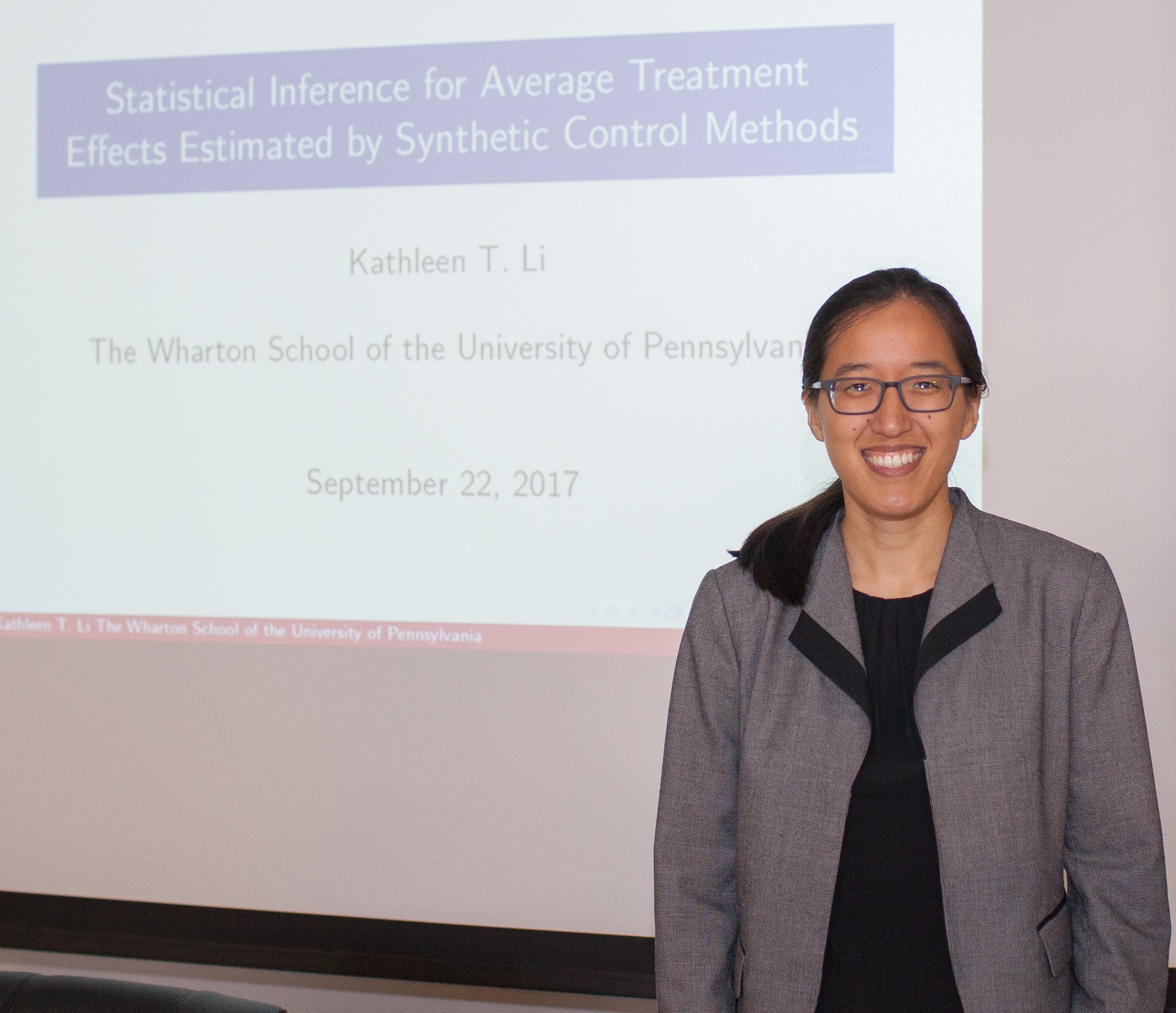
|
9/15/2017
10:30-12:00
|
Tong (Joy) Lu
Wharton
|
Binge Consumption of Online Content: A Boundedly Rational Model of Goal Progress and Knowledge Accumulation
-
Click to read Abstract
Binge consumption of online content has emerged as a trending phenomenon among customers of online streaming services, with various content providers spanning the spectrum from entertainment to education. Here, we focus on binging within an online education setting, using clickstream data from Coursera in which we observe individual-level lecture and quiz consumption patterns across multiple courses. We extend the literature by distinguishing between “temporal binging,” where individuals consume multiple pieces of content in a single sitting, and “content binging,” where individuals consume content from the same course in succession.
We build a model that captures individual decisions about which course to consume, whether the content is a lecture or a quiz, and when to take breaks of different lengths. The parameters of our model can be mapped to specific theories in consumer psychology, which allows us to test for the mechanisms that drive binge consumption. There are three key features of our model: First, we assume that individuals are motivated to consume to progress towards the goal of completing the course. We find that consumption patterns are consistent with those predicted by goal gradient and slack theory, but inconsistent with other theories. Second, individuals are motivated to accumulate knowledge through lectures in order to pass quizzes. Beliefs about quiz-taking abilities are updated based on prior quiz scores, which we observe as a concrete measure of knowledge of the course material. Third, we assume that individuals are forward-looking in a boundedly rational way.
To explore whether different firm policies may impact binging patterns, we conduct counterfactual simulations to determine how the timing of content release affects consumption
and knowledge accumulation. We then test these predictions using data obtained after a “natural experiment” policy change when the Coursera platform transitioned from sequential to simultaneous course content release in the year following our original data sample.
|
Seshadri Tirunillai
|

|
7/31/2017
365A MH
10:30-12:00
|
Julie Lee
University of Western Australia
|
The theory, measurement and application of values and values-expression across the human lifespan
-
Click to read Abstract
Personal values, as a major aspect of personality, have received a great deal of attention in psychology, but far less in marketing. Values, as motivational life goals, indicate what is important to people across contexts and situations. They have been related to a wide range of attitudes and behaviours, especially those that are not resource constrained. However, marketers are mostly interested in behaviour that is resource constrained. In this seminar, recent refinements to values theory and measurement will be discussed and the ways in which value-expression might be uncovered will be explored. Data presented is from the first stage of a large cross-sequential study of over 7000 adults, who are participating in a 3 year study. The full study will be explained and opportunities for collaboration can be explored.
|
Jackie Kacen
|
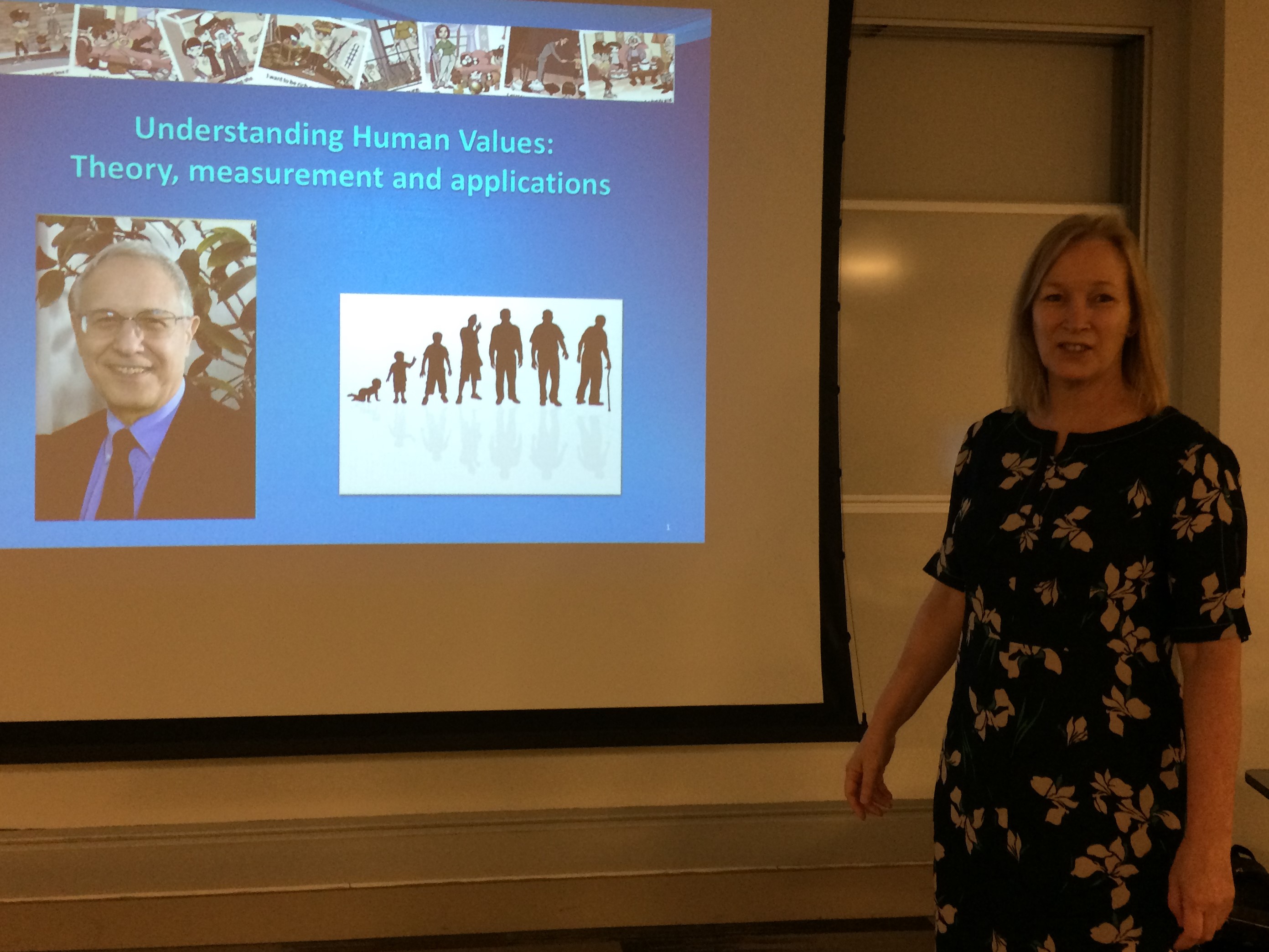
|
4/14/2017
365A MH
10:30-12:00
|
Willa Friedman
UH Economics
|
Money, Masculinity, and Men’s Health: Experimental Evidence on Demand for a Preventive Health Input
-
Click to read Abstract
A fundamental puzzle about human behavior is the low level of household investment in preventive health inputs. We conducted a field experiment testing advertising strategies designed to increase demand for a life-saving preventive health technology. Offering compensation of US$10 conditional on completing a counseling session for the technology tripled uptake. Framing the basic advertisement using the statement, “Are you tough enough?”, doubled uptake. Suggestive evidence indicates these advertisements reduced procrastination. Our study appears to be the first showing that a small conditional cash transfer for a one-time health clinic visit can improve individual investment in preventive health inputs.
|
|
4/8/2017
365A MH
10:30-12:00
|
|
The 35th UH Marketing Doctoral Symposium
|
|
4/7/2017
365A MH
10:30-12:00
|
Keynote speaker: David Bell
Wharton
|
The 35th UH Marketing Doctoral Symposium
|
|
3/24/2017
365A MH
10:30-12:00
|
James Hess
UH
|
Counterfeits, Knockoffs and Conspicuous Consumption: A Model of Counterfeits and Status Goods
-
Click to read Abstract
What determines why some consumers buy counterfeit goods? Our economic model incorporates bandwagon and snob effects into the consumers’ purchases of both authentic and counterfeit status goods. The population is divided into two groups, Elites and Seekers, where Elites want to consume a product that helps distinguish themselves from the common Seekers. The Seekers want to buy status by appearing to consume the same product as the Elites. What if there is also a counterfeit status product available at a dramatically lower price that some Seekers might buy? Counterfeits may be recognized as fakes, humiliating the Seeker and resulting in a violation of the law of demand. Rational expectation equilibrium demand functions are developed for both groups and supported in a laboratory experiment.
|
|
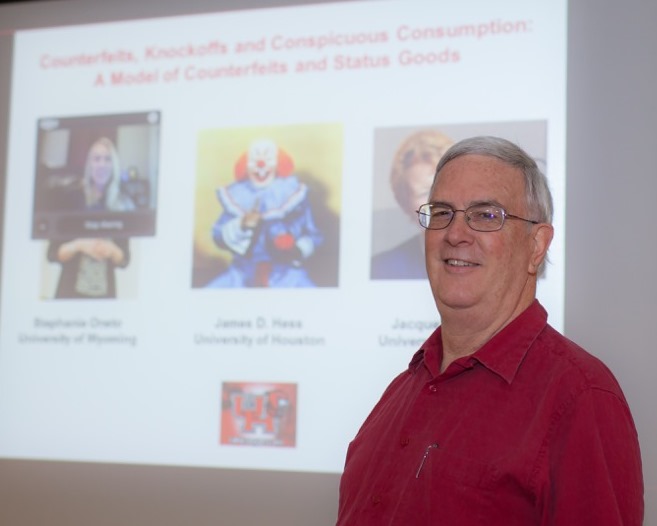
|
3/10/2017
365A MH
10:30-12:00
|
Raj Raghunathan
UT Austin
|
The Fundamental Happiness Paradox: The Intention-Action Gap in Seeking Happiness
-
Click to read Abstract
Happiness (or subjective well-being) is widely regarded as one of our most important goals. For instance, one study (Oishi and Diener 2006) of 10,000 respondents from 48 countries found that people rate happiness higher than success, wealth, and intelligence. As such, one would expect that people's decisions reflect the greater importance they accord to happiness. Yet, across the studies reported in this paper, we find that people routinely sacrifice happiness in favor or other goals, including the ones that they rate as being less important (e.g., money, success). We highlight the theoretical and substantive significance of these findings.
|
Seshadri Tirunillai
|
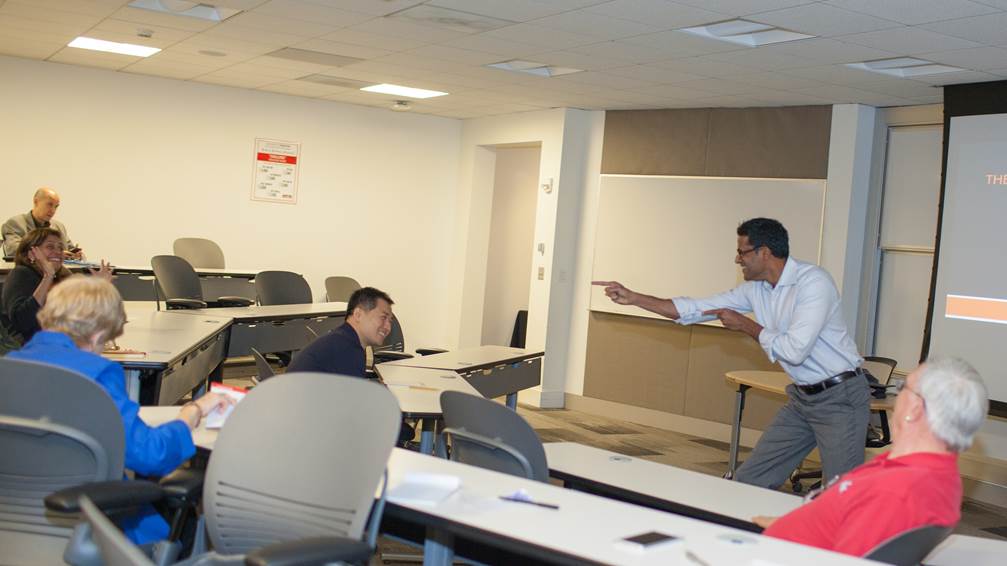
|
3/3/2017
365A MH
10:30-12:00
|
Michael Braun
SMU
|
Racial Disparity in Enforcement of Ambiguously Defined Crimes: A Bayesian Analysis of Texas Organized Retail Theft Arrests
|
Seshadri Tirunillai
|
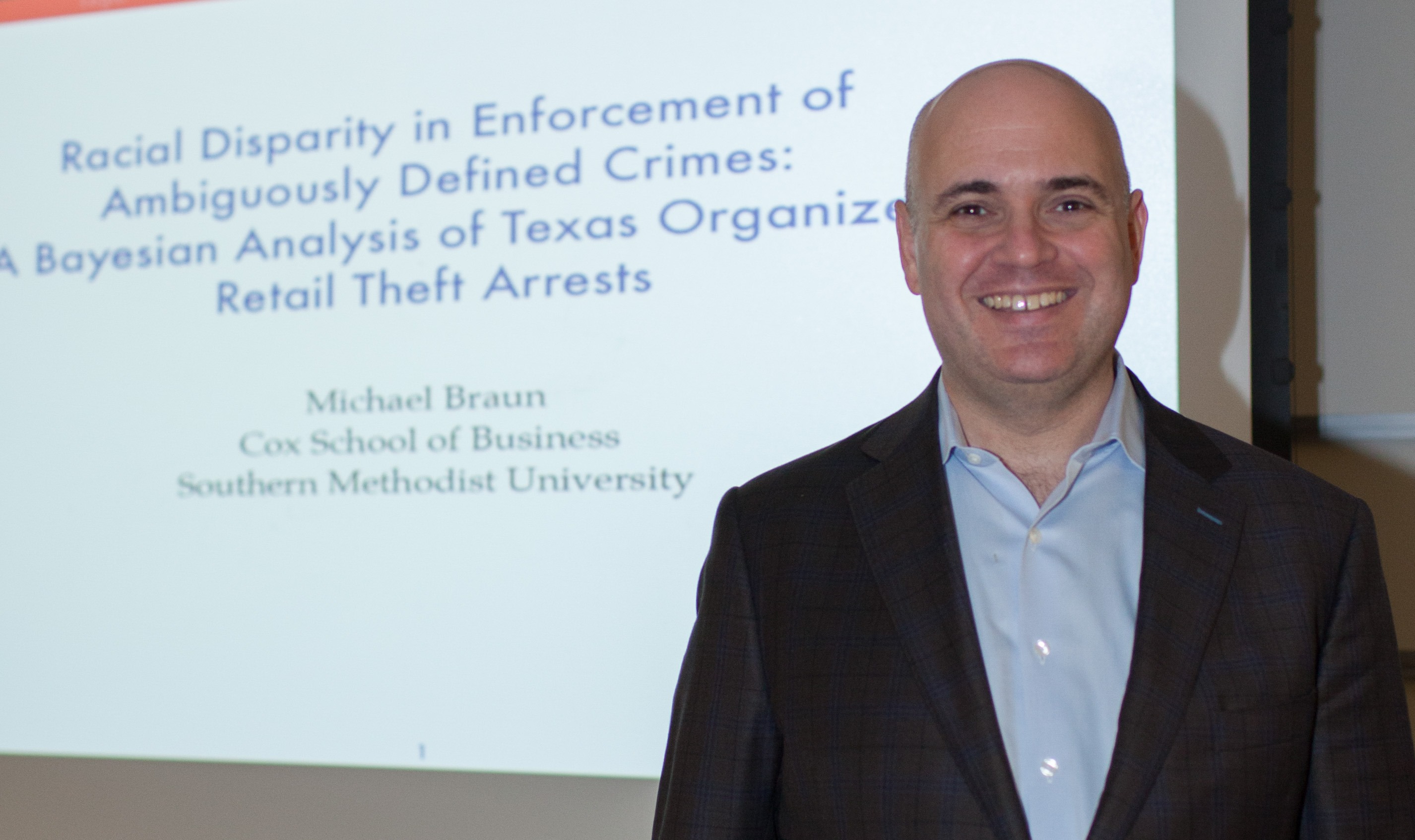
|
2/24/2017
365A MH
10:30-12:00
|
Aparna Sundar
Oregon
|
Semantic Association of Packaging: How Packaging Leads to Biased Health-Related Inferences
-
Click to read Abstract
Package design differentiates a product from its competitors. This research investigates how packaging form can influence judgments of a food product's healthiness. Across our studies, we demonstrate that the form adopted can lead consumers to infer that a food product is more (vs. less) healthy. These findings demonstrate a novel health halo cue (i.e. a form-based, visual cue). The results of this research indicate that marketers should be cognizant of the far reaching consequences of adopting forms of packaging
that have preexisting associations in consumers' minds.
|
Seshadri Tirunillai
|

|
2/10/2017
365A MH
10:30-12:00
|
Rebecca Reczek
The Ohio State University
|
That’s Not How I Remember It: Willfully Ignorant Memory for Ethical Product Attribute Information
-
Click to read Abstract
This research is the first to document a systematic bias in memory for ethical attribute information. Specifically, we predict and document a type of motivated forgetting unique to ethical attributes: Consumers have relatively better memory for good versus poor performance on an ethical attribute due to conflict between the want and should selves. Consumers want to avoid emotionally difficult information (e.g., that a product is made with child labor) but feel they ought to remember it in order to do the right thing. Forgetting this information resolves the conflict. Across five studies we establish the willfully ignorant memory effect, address alternative explanations, provide process evidence, and ameliorate the effect by reducing the amount of pressure exerted by the should self to remember ethical attribute information, thereby reducing the conflict and reducing motivated forgetting. We also show that other important attributes (e.g., price) show a negativity bias of relatively better memory for more negative attribute values, demonstrating the uniqueness of the effect for ethical attributes.
|
Melanie Rudd
|
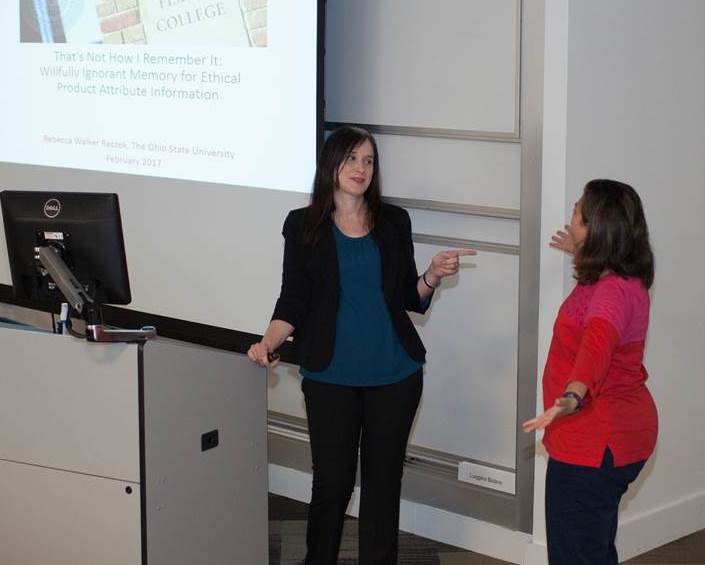
|
2/3/2017
365A MH
10:30-12:00
|
Melanie Rudd
UH
|
Inspired to Create:
Awe Enhances Openness to Learning and the Desire for Experiential Creation
-
Click to read Abstract
One putative truism is that people are cognitive misers. We investigated an emotion—awe—that motivates people to break free from mental miserliness through a willingness to learn, thereby fueling their desire for experiential creation (i.e., activities in which people actively produce an outcome). Six experiments tested and found that people induced to experience awe (vs. happiness or neutrality) were more likely to choose an experiential creation gift (vs. one not involving experiential creation), were willing to pay more for experiential creation products (vs. comparable ready-made products), were more likely to create a bespoke snack (vs. take a premade one), were more likely to solve problems using experiential creation solutions (vs. solutions without experiential creation), preferred meals high (vs. low) in experiential creation, and were more likely to create a knickknack (vs. take a premade one). This greater desire for experiential creation was mediated by openness to learning and moderated by dispositional need for closure. These findings are relevant for firms encouraging creation-oriented products and behaviors, offering fresh insights on how to engage consumers.
|
|
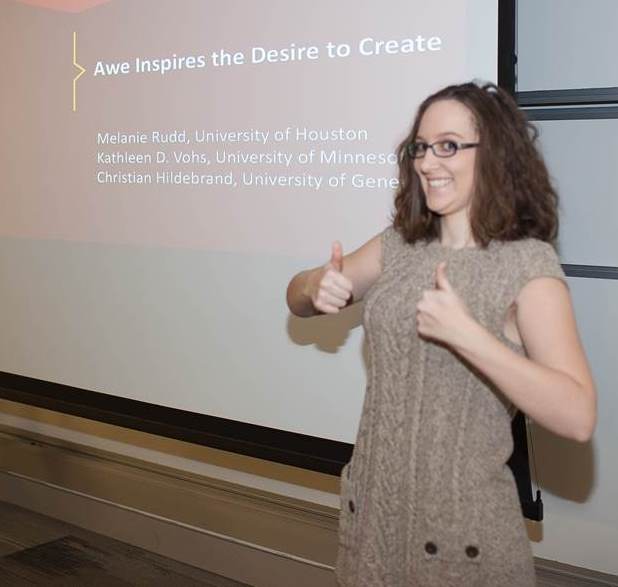
|
1/27/2017
365A MH
10:30-12:00
|
Joan Meyers-Levy
Minnesota
|
Why and When How You Sit Matters: The Effect of Sitting Posture on Cognitive Exploration and Thoughts
-
Click to read Abstract
Can how people sit influence their thinking? We propose that people's sitting posture alters the control they exert covertly when they explore memory to access or generate ideas. Sitting upright (relaxed) tightens (loosens) such control, prompting people to engage in narrow- (broad) spanning cognitive exploration. This thesis is grounded in embodied cognition theory. It holds that bodily experiences (e.g., sitting posture) are intricately connected in memory with situational knowledge that commonly accompanies these experiences, such that the two are reciprocally activated. Thus, because people are socialized and learn to sit upright (relaxed) in contexts that normatively require (allow) their attentional and cognitive faculties to concentrate selectively on (wander expansively from) focal matters, simply adopting an upright (relaxed) sitting posture triggers this situational knowledge, thereby prompting narrow- (broad-) spanning cognitive exploration. Four studies test this theorizing by demonstrating diverse consequences spawned by such cognitive exploration, namely the inclination to select safe versus risky decision options, identify concrete versus abstract ideations more quickly, and both appreciate and produce more creative output. Further, evidence affirms that the span of people’s cognitive exploration process, as indicated by the distance between ideas they access in memory, mediates the effect of sitting posture on such outcomes.
|
Melanie Rudd
|

|